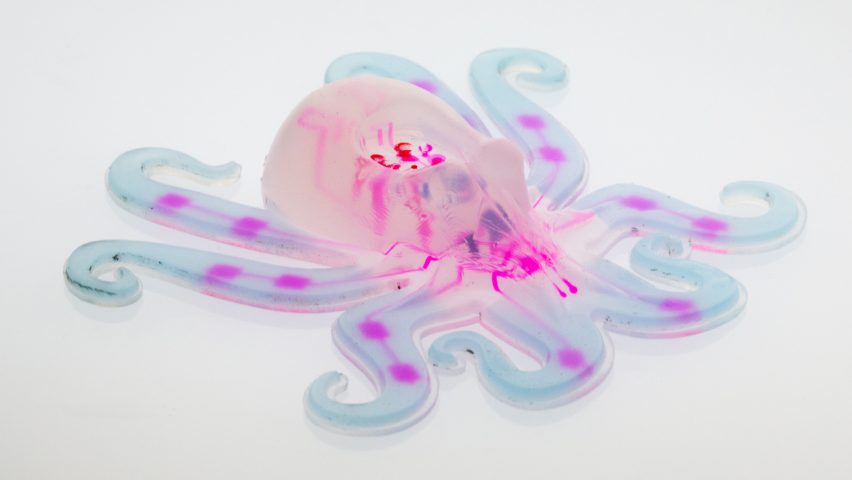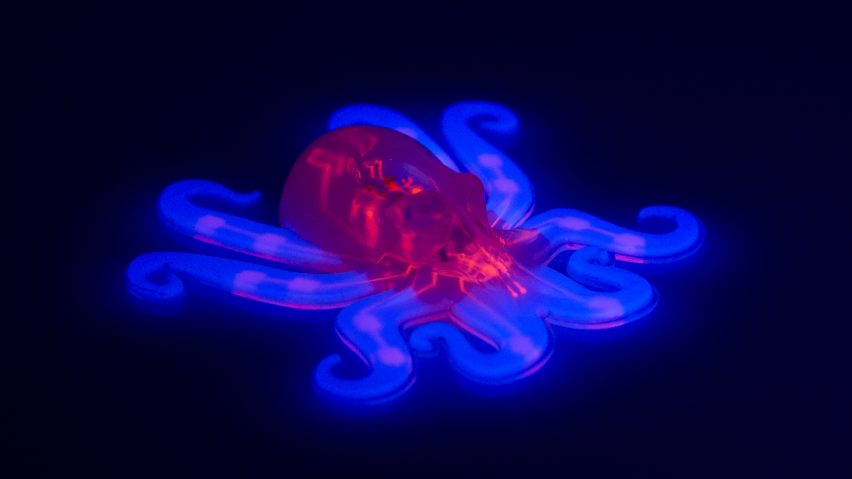
Octobot is a soft 3D-printed robot that moves by itself
Researchers at Harvard University have designed a soft 3D-printed robot that can move on its own, powered by a chemical reaction, instead of electricity or batteries.
Shaped like a cartoon octopus, the Octobot contains no electronics or other hard parts, relying instead on a silicone body that houses a fluid-filled circuit.
The soft robot is 3D printed in silicone, with a hollow body
Previously, soft-bodied robots had needed to rely on rigid components for power. But the Octobot uses hydrogen peroxide as fuel.
The liquid flows around a network of pre-printed hollows in the robot's body, and creates a reaction as it passes over platinum embedded inside. This produces gas that inflates and moves the arms, to propel the robot through water.

Hydrogen peroxide is put inside the robot's body, causing a chemical reaction as it passes over platinum embedded inside
According to the research team, the Octobot is the first self-contained soft robot ever made.
Although it can't currently steer itself, the team is researching ways of incorporating sensors that could allow it to navigate and respond to its environment.
"One longstanding vision for the field of soft robotics has been to create robots that are entirely soft," said Robert Wood, professor of engineering and applied sciences at Harvard.
"But the struggle has always been in replacing rigid components like batteries and electronic controls with analogous soft systems and then putting it all together."
The chemical reaction produces gas that inflates and moves the arms to propel the robot through water
"This research demonstrates that we can easily manufacture the key components of a simple, entirely soft robot, which lays the foundation for more complex designs," he added.
Another recent investigation into the future possibilities of robotics, by North Carolina State University, proposed a swarm of cyborg insects that could be used to map environments too dangerous for humans to enter.
Robots have also been used recently to construct furniture, tattoo people, and build bridges.